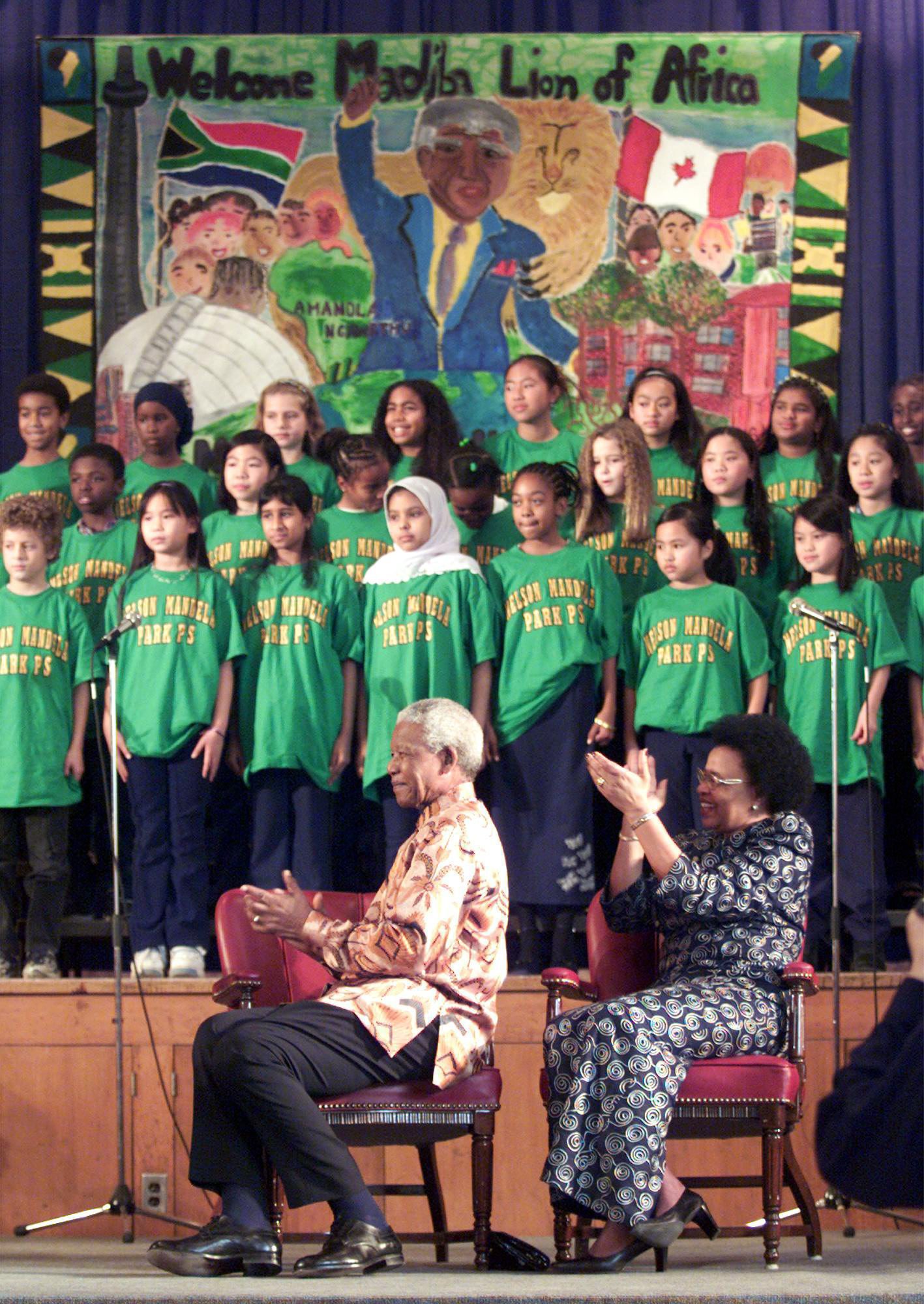
Even on a sun-drenched South African day, Robben Island is a bleak, uninviting outpost – rocky, windswept, circled by leagues of forbidding ocean, with only the heights of Table Mountain rising in the distance as a reminder that a real world still exists, somewhere on the far horizon.
When I visited in 1999 the island was a museum, a memorial to suffering. Yet while its jailers were long gone, the ghosts of cruelty still haunted the barracks that once housed the planet's most famous prisoner.
Nelson Mandela spent 18 years here in a concrete cell so small that when he lay down on the floor (there was no bed) his head touched one wall and his feet the other. How any human being could emerge from that trauma – plus another nine years in apartheid-era prisons on the mainland – without a trace of anger or desire for revenge is a wonder of our age.
Mandela, the first black president of South Africa, died this week — 5 Dec. 2013 — at the age of 95.
Canadians can take pride and comfort in knowing that one of the truths that sustained Mandela through his imprisonment was the knowledge that he wasn't alone. He knew that the outside world, with Canada often at the forefront, was with him, refusing to forget him, keeping the anti-apartheid flame alive.
John Diefenbaker took a leading role in persuading the Commonwealth to condemn South Africa, prompting the apartheid government to withdraw from the organization in 1961.
In subsequent decades civil society groups in Canada played a forceful role in the anti-apartheid struggle.
And one of the pillars of Canada's foreign policy through the late 1980s was opposition to the apartheid regime, through sanctions and other means. Brian Mulroney spent much political capital asking Ronald Reagan and Margaret Thatcher to get tougher on South Africa. His pleas were ignored, or ridiculed by his fellow conservative leaders in London and Washington, but in the end Mulroney was proved right.
Mandela never forgot what Canada did for his country.

"We regard you as one of our great friends because of the solid support we have received from you and Canada over the years," Mandela told Mulroney in a phone call in February, 1990, the day after his release from prison.
The friendship with Canada blossomed. Four months after becoming a free man, Mandela was granted the extraordinary privilege of speaking, as a private, non-official foreigner, from the floor of the House of Commons in Ottawa. He thanked Canadians for having "reached out across the seas . . . to the rebels, the fugitives and the prisoners" of the apartheid regime.
In later years, Mandela would be feted by more than 50,000 awestruck fans at the SkyDome in Toronto; and in 2001 Jean Chretien made him an honorary citizen of Canada. Friends also report that Mandela's soft spot for Canada was often expressed by his requests and fondness for maple syrup.
One little-known fact is that in the late 1990s many senior Canadian officials – including then New Brunswick Premier Frank McKenna – also gave critical, behind-the-scenes support to the "new" South Africa, teaching the art of governance to its fledgling, regional state governments and their newly-elected political leaders. (The program was called the South Africa-Canada Program on Governance.)
Today there are schools and streets across Canada that bear Mandela's name. But perhaps nowhere are his ties with our country best memorialized than in his own description of an unexpected stop he made in 1990 in Goose Bay, Labrador, at the end of his first visit to Canada.
Taking a stroll on the tarmac as his airplane refuelled, Mandela approached a group of Innu teens watching the famous visitor through an airport fence.
"I learned that they had watched my release on television, and were familiar with events in South Africa," he said. "It was amazing to me that a teenage Innuit [sic] living at the roof of the world could watch the release of a political prisoner on the southern tip of Africa."

 Share on Facebook
Share on Facebook Share on X
Share on X Share by Email
Share by Email Share on Google Classroom
Share on Google Classroom

